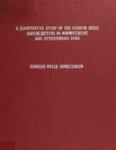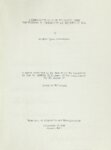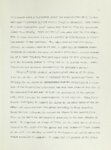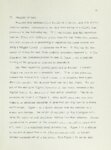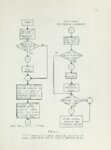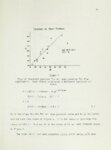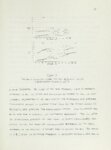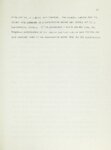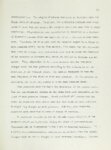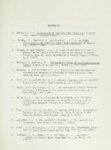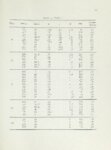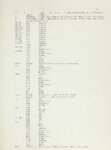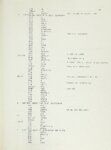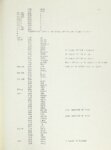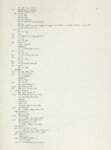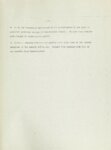| Description |
A transfer function of the carotid sinus baroreceptors was' derived for normotensive and renal- hypertensive dogs. rata in the- form of single fiber or two fiber action potentials and the pressure pulse was recorded on FM analog tape. During the experiments on both normo and hypertensive animals the mean pressure levels were' varied. An increase in pressure was achieved by an intravenous drip of norepinephrine- in saline and a decrease by an infusion of hexamethonium in saline. The instantaneous frequency of the action potentials' from a single fiber was determined in the following way. If the recording was from a two fiber preparation a digital computer was used to display an amplitude histogram of the two fibens on a memory oscilloscope. An amplitude threshold could be determined Tor the action potential discharging at lower amplitude. This fiber was eliminated by entering this threshold into the computer from a digital keyboard connected to the computer. The data was run again and only those action potentials whose amplitudes were greater than the amplitude threshold were analyzed. Instantaneous frequency of the action potentials was determined using another program. This was done by determining the time intervals between action potentials and dividing into a constant. Simultaneous sampling of the pressure pulse was done at a rate of 100 samples/second. Frequency and pressure pulse data were stored on digital tape for further analysis. From the work of previous investigators a simple model was derived consisting of two dynamic terms and a static term of the form, f = A' dP / dt +: B' dP/ dt +- CX( P( t) - Pth) where A' , B' , CX and Pth are constants' whose values were determined empirically. Simulations using this model on a digital computer were carried out and compared with the data from normotensive animals. To match the output frequency curves of the model with the frequency curves of the real data it was necessary to vary ex and Pth as mean pressure was varied. A model in which these parameters could be kept constant while mean pressure was changed over a wide range of values was attempted. This model had the form f = A(G - Pmean)dP/dt +: B' dP/dt + O(P(t) - CoPmean - Po)e - CoPmean where A, G, B', C, Co, Po and Ck were constants' whose' values were determined empirically at control' levels' of me an pressure. These constants were not changed as the mean pressure levels were varied and reasonably good matches were obtained with the real data. The same simulation procedure was carried out for the data from hypertensive animals. It ,was' found that the parameters Co and- Po were not in the same range as for the normotensive animals. This was recognized as a confirmation of the "resetting" of the baroreceptors in hypertension. A proposed mechanical model of the baroreceptors was suggested in the light of parameter variations in the normo and hypertensive states. It is suggested that the derived model gives a useful tool for the future analysis of baroreceptor fibers of different classes (small vs. large fibers) and, in general, for subsequent studies of cardiovascular control systems |

